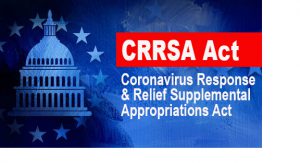Both Control Consultants Inc. and our customers alike have seen tremendous change over the past few years. John Donahue retired, we were acquired by The Kele Companies, and of course, we faced challenges with supply, labor, and logistical problems that were brought about by COVID. As the industry evolves and we advance with it, I want you to understand today’s CCI.
Since the acquisition, CCI has expanded and enhanced its ability to serve customers by providing an upgraded order fulfillment experience paired with faster delivery nationwide. As a CCI customer, you have gained access to everything Kele offers …
- 3M+ parts that ship the same day
- Order tracking
- Quarterly training and certifications
- Custom panel shop
- Calibration and assembly
- Technical and Application Engineer support
You are also backed by a strong internal team here at CCI …
- Engineering Lead: Derek Clark – Niagara Certified Professional
- Application Engineers:
- Nghia – CAD drawings, engineering submittals
- Alexis – CAD drawings, engineering submittals
- Sean Foley – UL508A panel shop, field service, gas calibration, VFD start-ups
- Director of Sales: Tony Ciuffo – 30+ years of industry experience
- Warehouse Lead: Rich Bennett
- Panel Shop Lead: Marc Smith – 20+ years of experience building panels for CCI
- Purchasing & Niagara Licensing Lead: Joe Mercurio – 25+ years with CCI
- The sales team consists of senior sales specialists that cover territories throughout New England and upstate New York.
We are continuously striving towards improving your CCI experience. Recently, we have revamped our warehouse with a state-of-the-art bar code system, enabling automatic product-to-order allocation and same-day shipping. Our inventory goes through random cycle counts daily to ensure accuracy. And we are now offering services associated with the Mass Save® rebate program.
CCI and Kele stay committed to helping you win on the job. We appreciate your business and look forward to partnering with you both now and in the future.
Sincerely,
Michael Youngs, President & GM



 Do your customers know that they have a deadline to meet when it comes to spending the federal funding they’ve received regarding COVID-19? Well, the Coronavirus Response and Relief Supplemental Appropriations (CRRSA) Act has funds available through September 30, 2023. This is your friendly reminder that such funding will come to an end in a little over a year, so now is the time to spend those funds on critical needs within schools.
Do your customers know that they have a deadline to meet when it comes to spending the federal funding they’ve received regarding COVID-19? Well, the Coronavirus Response and Relief Supplemental Appropriations (CRRSA) Act has funds available through September 30, 2023. This is your friendly reminder that such funding will come to an end in a little over a year, so now is the time to spend those funds on critical needs within schools.




